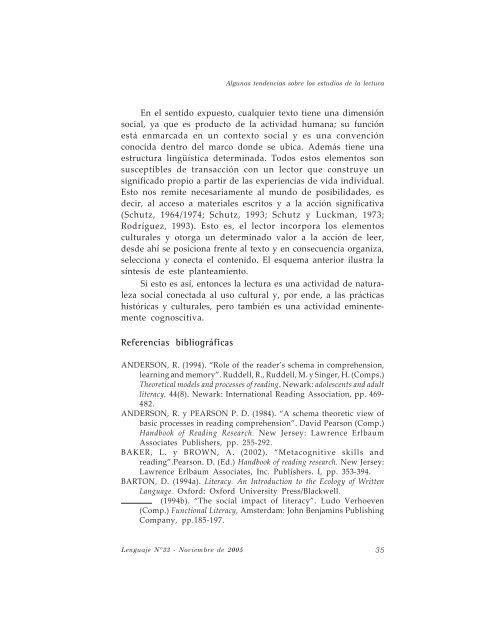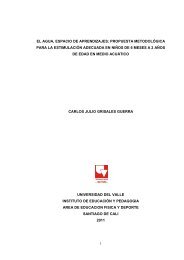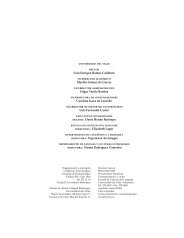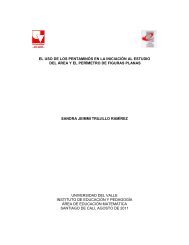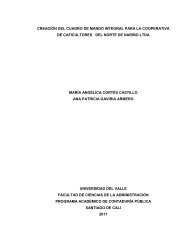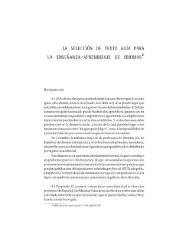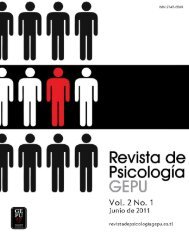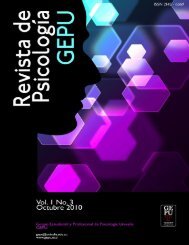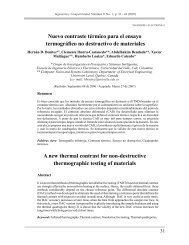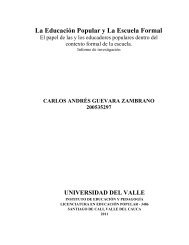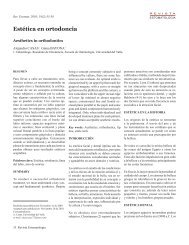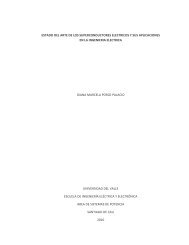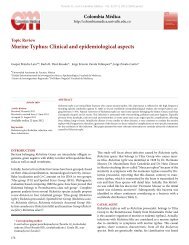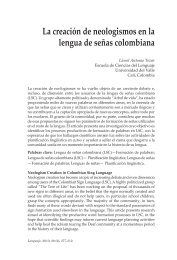Iván Enrique Ramos Calderón Martha Gómez de García Francisco ...
Iván Enrique Ramos Calderón Martha Gómez de García Francisco ...
Iván Enrique Ramos Calderón Martha Gómez de García Francisco ...
You also want an ePaper? Increase the reach of your titles
YUMPU automatically turns print PDFs into web optimized ePapers that Google loves.
En el sentido expuesto, cualquier texto tiene una dimensión<br />
social, ya que es producto <strong>de</strong> la actividad humana; su función<br />
está enmarcada en un contexto social y es una convención<br />
conocida <strong>de</strong>ntro <strong>de</strong>l marco don<strong>de</strong> se ubica A<strong>de</strong>más tiene una<br />
estructura lingüística <strong>de</strong>terminada Todos estos elementos son<br />
susceptibles <strong>de</strong> transacción con un lector que construye un<br />
significado propio a partir <strong>de</strong> las experiencias <strong>de</strong> vida individual<br />
Esto nos remite necesariamente al mundo <strong>de</strong> posibilida<strong>de</strong>s, es<br />
<strong>de</strong>cir, al acceso a materiales escritos y a la acción significativa<br />
(Schutz, 1964/1974; Schutz, 1993; Schutz y Luckman, 1973;<br />
Rodríguez, 1993) Esto es, el lector incorpora los elementos<br />
culturales y otorga un <strong>de</strong>terminado valor a la acción <strong>de</strong> leer,<br />
<strong>de</strong>s<strong>de</strong> ahí se posiciona frente al texto y en consecuencia organiza,<br />
selecciona y conecta el contenido El esquema anterior ilustra la<br />
síntesis <strong>de</strong> este planteamiento<br />
Si esto es así, entonces la lectura es una actividad <strong>de</strong> naturaleza<br />
social conectada al uso cultural y, por en<strong>de</strong>, a las prácticas<br />
históricas y culturales, pero también es una actividad eminentemente<br />
cognoscitiva<br />
Referencias bibliográficas<br />
Algunas ten<strong>de</strong>ncias sobre los estudios <strong>de</strong> la lectura<br />
ANDERSON, R (1994) “Role of the rea<strong>de</strong>r’s schema in comprehension,<br />
learning and memory” Rud<strong>de</strong>ll, R, Rud<strong>de</strong>ll, M y Singer, H (Comps)<br />
Theoretical mo<strong>de</strong>ls and processes of reading Newark: adolescents and adult<br />
literacy, 44(8) Newark: International Reading Association, pp 469-<br />
482<br />
ANDERSON, R y PEARSON P D (1984) “A schema theoretic view of<br />
basic processes in reading comprehension” David Pearson (Comp)<br />
Handbook of Reading Research New Jersey: Lawrence Erlbaum<br />
Associates Publishers, pp 255-292<br />
BAKER, L y BROWN, A (2002) “Metacognitive skills and<br />
reading”Pearson D (Ed) Handbook of reading research New Jersey:<br />
Lawrence Erlbaum Associates, Inc Publishers I, pp 353-394<br />
BARTON, D (1994a) Literacy An Introduction to the Ecology of Written<br />
Language Oxford: Oxford University Press/Blackwell<br />
(1994b) “The social impact of literacy” Ludo Verhoeven<br />
(Comp) Functional Literacy, Amsterdam: John Benjamins Publishing<br />
Company, pp185-197<br />
Lenguaje Nº33 - Noviembre <strong>de</strong> 2005 35


